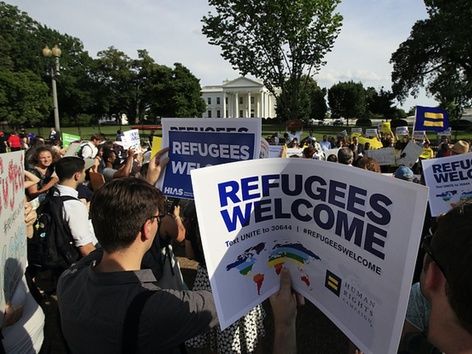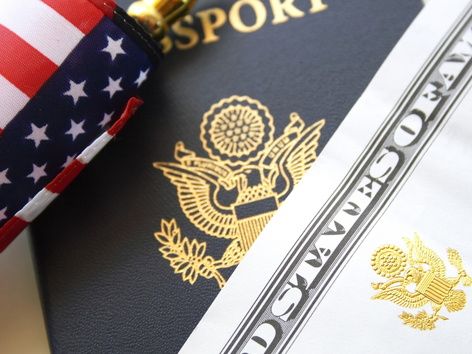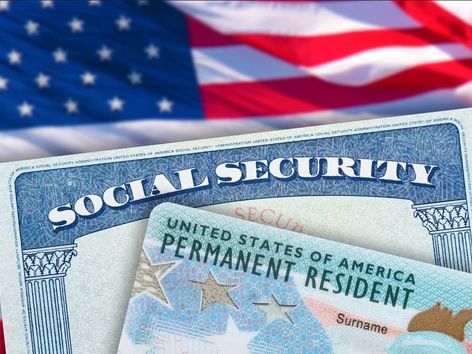Refugee status in the United States: a detailed guide

A refugee is a person who is forced to flee their country for fear of persecution due to religious, political, or social reasons. The United States has a system that provides protection and assistance to refugees. Learn more about the key aspects of obtaining refugee status in the United States
The United States has long been a safe haven for refugees from around the world. President Biden is working to expand the resettlement program after the Trump administration drastically cut it. Traditionally, the largest number of migrants come to the United States from India, Mexico, Haiti, and Cuba.
The procedure for obtaining refugee status in the United States
The first step is to apply for refugee status. This can be done through an international resettlement program or at the US border. The application must be substantiated and contain information about the circumstances of the persecution.
After the application is submitted, immigration authorities review the circumstances and determine whether the fear of persecution is well-founded. This process includes interviews and a detailed analysis of the information provided.
Individuals who are granted refugee status undergo a medical examination to ensure their health. After that, they have the opportunity to resettle in the United States with the support of international resettlement programs.
Refugees receive financial assistance for the initial period, health insurance, and educational opportunities for adaptation. Resettlement agencies and NGOs provide support and counseling.
Refugees can take advantage of educational and vocational programs to improve their skills and integrate into American society.
Obtaining refugee status in the United States is a complex but well-designed process aimed at providing protection and support to those seeking asylum in a new country.
Migration policy of the United States
The United States has played a pivotal role in welcoming refugees for many years, from evacuating hundreds of thousands of Europeans during World War II to helping those fleeing communist regimes during the Cold War. Since 1980, the government has implemented a standardized system for identifying, screening, and resettling potential refugees that complies with international humanitarian law.
Different administrations in the United States have made changes to the scope of the refugee program. Under Presidents Obama and Trump, there was a growing focus on refugees from the Middle East, but the policy changed, sparking national security debates. Now, under President Biden, a renewed refugee assistance program has been announced, including the Welcome Corps initiative, which will allow citizens to privately sponsor refugees.
Given the conflicts around the world, such as in Afghanistan and Ukraine, that are leading to massive displacement, Biden's pledge is an important step in restoring humanitarian aid. The new initiatives are expected to enable the US to continue its role in providing asylum and facilitating the integration of refugees into American society.
How long has the United States been accepting refugees?
For more than 75 years, the United States has served as an important haven for migrants recognized by the international community as refugees. After World War II, when the first refugee law was passed, more than 650,000 Europeans were able to resettle in the United States. During the Cold War, the country welcomed those fleeing communist regimes in China, Cuba, and Eastern Europe.
The federal refugee resettlement program, known as the U.S. Refugee Admissions Program (USRAP), was only officially established in 1980 with the Refugee Act. Until then, refugee admissions were regulated largely on an ad hoc basis, responding to specific migration needs. It was only after the collapse of South Vietnam in 1975, when the United States opened its doors to hundreds of thousands of refugees from Southeast Asia, that a more standardized system was created.
A 1980 law established permanent procedures for accepting refugees by officially defining the term "refugee," increasing the annual quota to 50,000, and giving the president the authority to accept additional refugees in emergency situations. Since then, the U.S. has accepted more than three million refugees, continuing to play a key role in global efforts to provide asylum to those seeking safety and a new start in life.
How many refugees can the United States accept?
Over the past seventy-five years, the number of refugees accepted annually in the United States has fluctuated significantly, ranging from over 200,000 in 1980 to 25,465 in 2022. These sharp declines and increases have been driven by a variety of circumstances, such as geopolitical events and domestic policy changes. Let's review the key events and trends that have influenced refugee admissions in the United States.
The beginning of the program (1980s): In the early 1980s, the US refugee program was launched with an annual limit of over 200,000 people. This period was characterized by high admissions as the country tried to respond to acute humanitarian needs.
Decline (1980s-1990s): During the 1980s, the number of refugees admitted to the United States declined rapidly. This was due to a sharp decline in geopolitical conflicts and the resolution of several crises that led to less need for asylum.
Growth (1990s): The fall of the Soviet Union and the disintegration of its satellites in the 1990s led to a new phase of growth in the number of refugees. Many immigrants came from the former Soviet republics, seeking new opportunities in the United States.
Post-Trump period (2017-2021): During the presidency of Donald Trump, refugee admissions limits were significantly reduced, which caused criticism and outrage. His administration argued that it was necessary to use resources more efficiently.
Changes under Biden (since 2021): Upon coming to power, President Joe Biden promised to change the refugee policy. Limits were raised, and the Welcome Corps program was created for private sponsorship of refugees.
Despite Biden's commitments, in 2021 and 2022, the number of refugees admitted was below the established limits. The COVID-19 pandemic and the slow application process affected the realization of the set goals.
Overall, refugee admissions in the United States are driven by global events, humanitarian crises, and political leadership. Future trends will depend on the actions of the current government, developments in the international situation, and the country's willingness to accept those seeking asylum and a better life in the United States.
What countries do most migrants come from in the United States?
The history of refugee admissions in the United States shows changes in the regions from which they originate, as well as the dynamics of political decisions that determine admissions. The beginning of the refugee resettlement program in 1980 marked a period of high intake, especially from Southeast Asian countries such as Cambodia and Vietnam, when more than 200,000 refugees were admitted.
Changes in political conditions and geopolitics have led to an increase in the number of refugees from the former Soviet Union after 1989. During 2010-2020, the largest number of refugees came from Myanmar, Iraq, and Bhutan. At the same time, in 2022, the picture changed, and most refugees came from the Democratic Republic of the Congo, Syria, Myanmar, and Sudan.
The Trump administration has imposed restrictions on seven Muslim-majority countries and complicated the entry process for Syrian refugees. These decisions have sparked considerable opposition and debate, proving to be complex in legal terms. The resettlement agreement with Australia also came under criticism from Trump, who sought to limit the number of refugees the United States would accept under the agreement.
All of these decisions have shaped the current landscape of refugee reception in the United States. Refugees from different countries and regions face different challenges and opportunities during the resettlement process. Despite fluctuations and changes in policy, the United States remains an important player in the global humanitarian dimension of refugee resettlement.
Daria Rogova, Head of Insurance at Visit World
To move, travel or work safely in a new country, you will need health insurance. You can apply for an extended policy on our website here.
Products from Visit World for a comfortable trip:
Checklist for obtaining a visa and necessary documents in the United States;
Legal advice on business issues in the United States;
Travel insurance for foreigners in the United States;
Medical insurance around the world.
More articles on the topic:
Car insurance for foreign drivers in the USA: what you need to know.
What are the employment opportunities in the USA for foreigners?
The United States needs more migrants to address labor shortages.
Is it legal to cross the U.S. border to seek asylum?
The American health care system: an in-depth guide for expats.
Scholarships for International Students in the USA for 2024/2025.
How long will it take to bring a spouse to the United States?
Temporary increase in the number of H-2B nonimmigrant visas for fiscal year 2024 in the United States.
The best courses to study in the USA: a detailed guide for international students.
Types of health insurance policies in the United States: a detailed guide.
Best US cities for immigrants to live in 2024.
Recommended articles
3 min
For refugees
Is it legal to cross the U.S. border to seek asylum?
Families are fleeing violence and persecution in their home countries, including unprecedented and growing humanitarian crises in Latin America, the Caribbean, Afghanistan, and parts of Africa, to find safety in the United States. Learn more about whether it is legal to cross the U.S. border to seek political asylum
29 Nov. 2023
More details3 min
Expats
The United States needs more migrants to address labor shortages
The modern economy of the United States of America is facing challenges related to labor shortages that affect various sectors and areas of the economy. To ensure sustainable economic growth, there is a need to attract more migrants. Find out more about the peculiarities of US migration policy, the main factors, possible consequences and prospects for attracting migrants
27 Nov. 2023
More details3 min
Treatment
The American health care system: an in-depth guide for expats
The healthcare system in the United States is one of the most complex and most diverse in the world. To understand its features and deal with medical issues, it is important for expats to familiarize themselves with its main features, costs, accessibility of services and other key aspects. Learn more about the features of the healthcare system in the US
30 Nov. 2023
More details2 min
Employment
Increased economic activity and the development of various industries are often accompanied by a growing demand for labor. To ensure the stable functioning of businesses in the United States and meet their needs for seasonal workers, the government takes strategic steps. In this context, the temporary increase in the number of H-2B nonimmigrant visas for fiscal year 2024 is a key initiative. Learn more about the impact of this decision on labor market competition and how it will affect various industries
05 Dec. 2023
More detailsAll materials and articles are owned by VisitWorld.Today and are protected by international intellectual property regulations. When using materials, approval from VisitWorld.Today is required.
